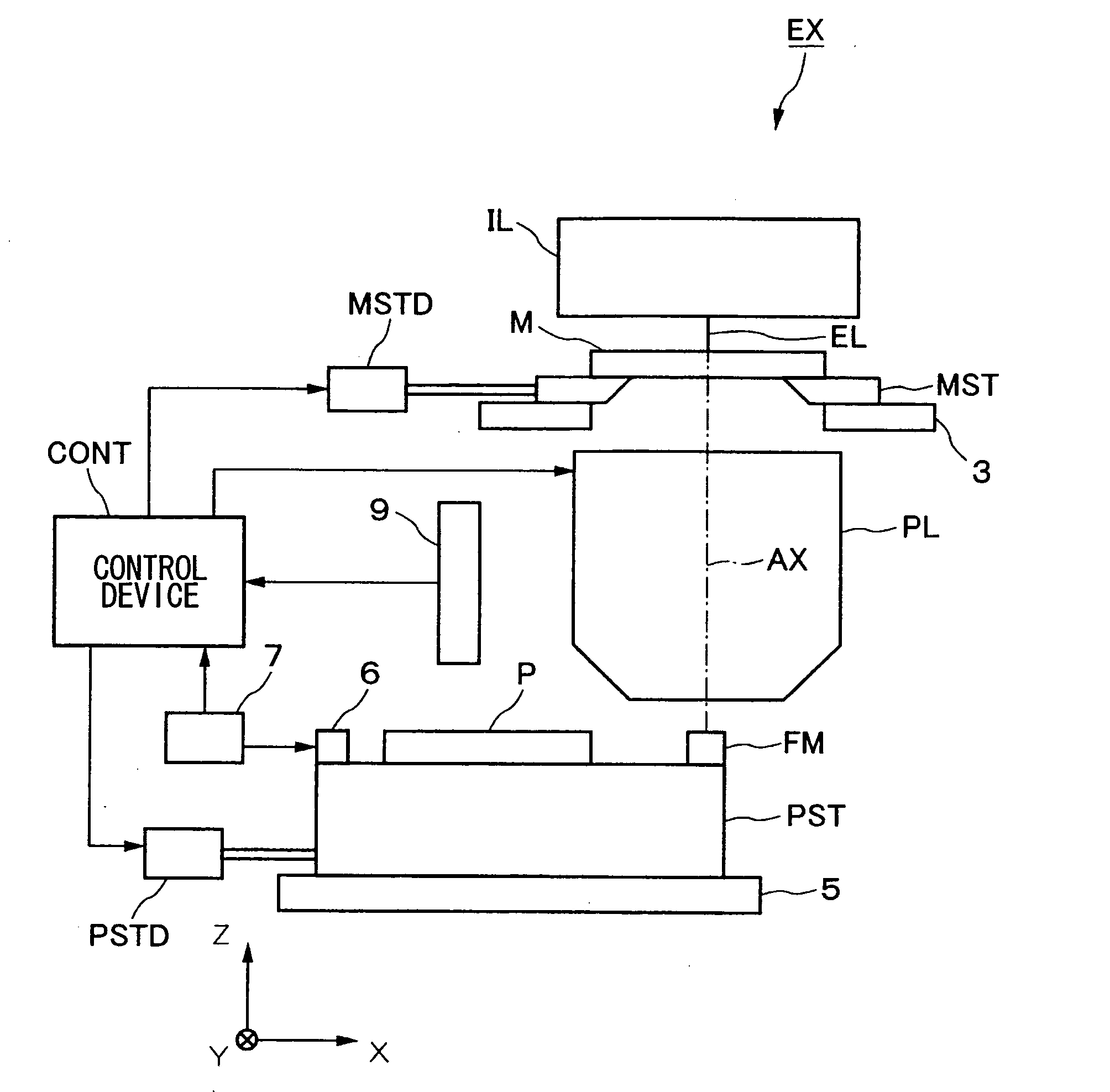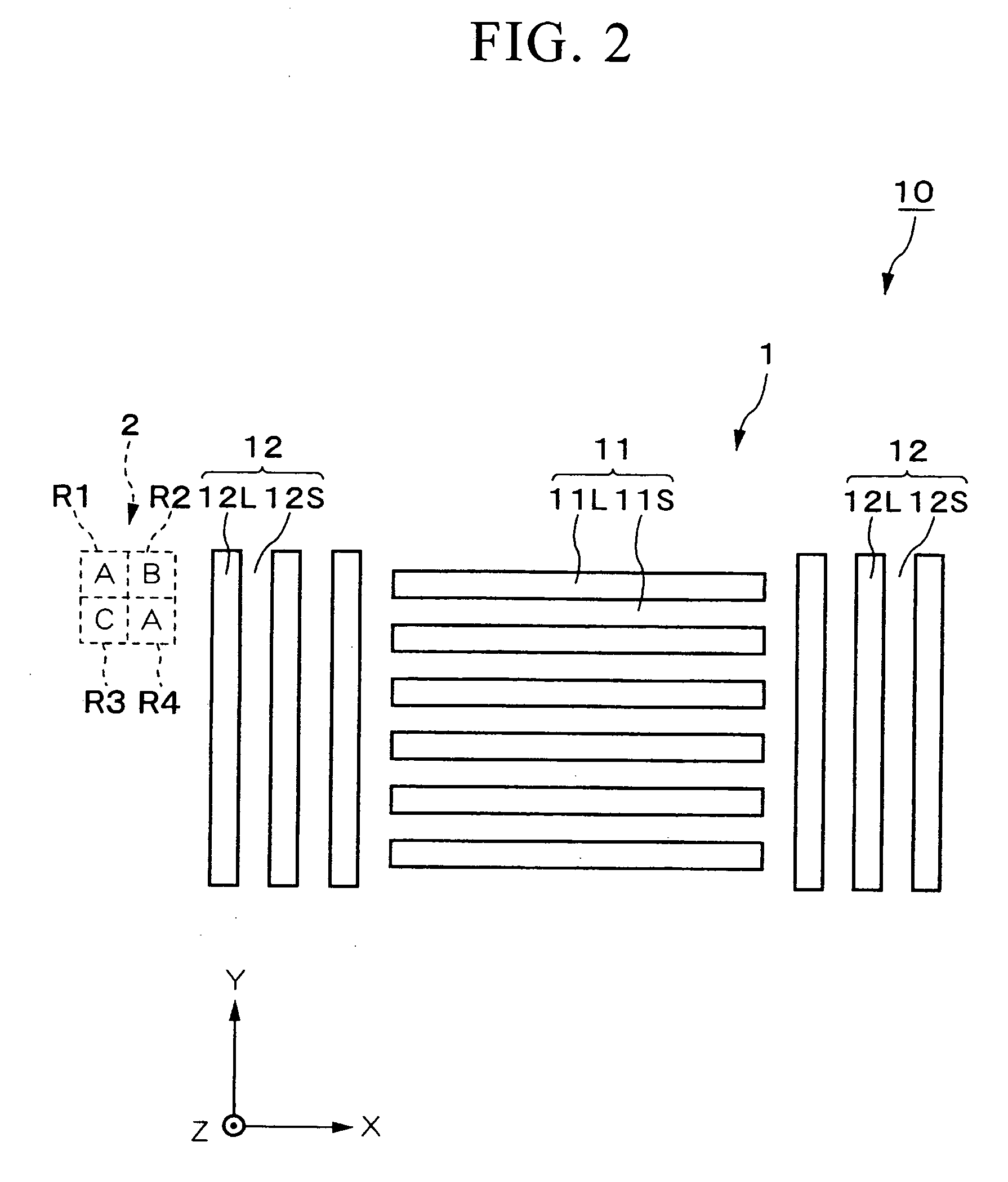Mark for position detection, mark identification method, position detection method, exposure method, and positional information detection method
a technology for position detection and mark identification, applied in the direction of instruments, photomechanical treatment, measurement devices, etc., can solve the problems of reducing the size of the transcription region upon the substrate, deteriorating the accuracy of alignment, and difficult to specify the alignment mark for aligning the pattern from the subsequent layer, etc., to enhance the simplicity of the detection process, increase the quantity of information, and improve the accuracy
- Summary
- Abstract
- Description
- Claims
- Application Information
AI Technical Summary
Benefits of technology
Problems solved by technology
Method used
Image
Examples
second embodiment
[0195] Next, the second embodiments of the mark for position detection and the mark identification method of the present invention will be explained with reference to FIGS. 11A through 11I. Here, in the following explanation, to structural elements which are the same as ones in the first embodiment described above or which are equivalent thereto, the same reference symbols will be affixed, and their explanation will be curtailed.
[0196] In FIGS. 11A through 11I, the identification mark 2 is made as an assembly of bit marks 30. Although in this embodiment the bit marks 30 are “□”, it would also be acceptable for them to be “◯” or “Δ”. Just as in the first embodiment, each of these bit marks 30 is formed in a respective region R1 through R4 which is set in a predetermined positional relationship with respect to the alignment mark 1. It should be understood that the number of regions of the identification mark 2 is not limited to four; it would be acceptable for it to be any natural nu...
third embodiment
[0202] Next, the third embodiment of the present invention will be explained with reference to FIGS. 12 and 13A through 13E.
[0203] In FIG. 12, each of the four regions R1 through R4 of the identification mark 2 is arranged so that they almost do not mutually overlap in the X axis direction and in the Y axis direction. And, by arranging the bit marks 30 which were explained in the second embodiment in each of these regions R1 through R4, it is possible to enhance the detection accuracy of the bit marks 30 by the alignment optical system 9, and thus to enhance the identification accuracy of the identification mark 2.
[0204] In other words although, as described above, the bit marks 30 are detected by scanning the photographic element for the X axis and the photographic element for the Y axis, if, for example, as shown in FIG. 13A, the region R1 and the region R2 are set along the X axis direction, and the bit marks 30 are individually provided in each of the region R1 and the region ...
fourth embodiment
[0206] Next, the fourth embodiment of the present invention will be explained with reference to FIG. 14.
[0207] As shown in FIGS. 14A through 14C, the identification marks 2 are arranged to extend along the prolongation of the direction of extension of the pattern portions of the alignment mark 1. In the example shown in FIG. 14A, the identification mark 2 is provided in a position which continues to the +Y side of the pattern portions 12L which extend in the Y axis direction among the alignment marks 1, and is provided on the +Y side of the central pattern portion 12L among the three pattern portions 12L which are provided in the illustrated mark 11 for Y detection upon the left side, and on the +Y side of the central pattern portion 12L among the three pattern portions 12L which are provided in the illustrated mark 11 for Y detection upon the right side. In the example shown in FIG. 14B, the identification marks 2 are provided on the +Y side of the central pattern portion 12L amon...
PUM
| Property | Measurement | Unit |
|---|---|---|
| wavelength | aaaaa | aaaaa |
| length | aaaaa | aaaaa |
| distance | aaaaa | aaaaa |
Abstract
Description
Claims
Application Information
 Login to View More
Login to View More - R&D
- Intellectual Property
- Life Sciences
- Materials
- Tech Scout
- Unparalleled Data Quality
- Higher Quality Content
- 60% Fewer Hallucinations
Browse by: Latest US Patents, China's latest patents, Technical Efficacy Thesaurus, Application Domain, Technology Topic, Popular Technical Reports.
© 2025 PatSnap. All rights reserved.Legal|Privacy policy|Modern Slavery Act Transparency Statement|Sitemap|About US| Contact US: help@patsnap.com



